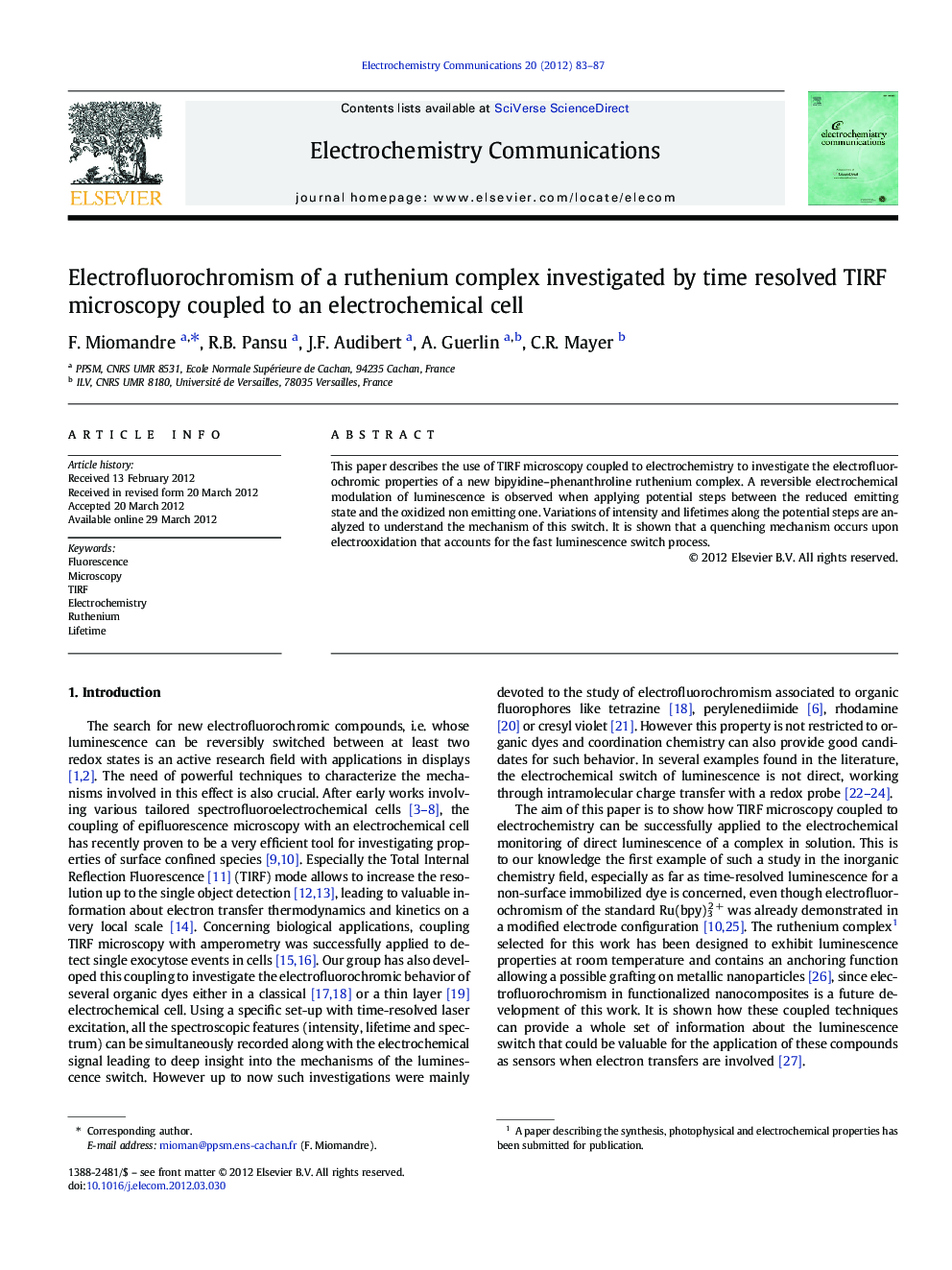| Article ID | Journal | Published Year | Pages | File Type |
|---|---|---|---|---|
| 179718 | Electrochemistry Communications | 2012 | 5 Pages |
This paper describes the use of TIRF microscopy coupled to electrochemistry to investigate the electrofluorochromic properties of a new bipyidine–phenanthroline ruthenium complex. A reversible electrochemical modulation of luminescence is observed when applying potential steps between the reduced emitting state and the oxidized non emitting one. Variations of intensity and lifetimes along the potential steps are analyzed to understand the mechanism of this switch. It is shown that a quenching mechanism occurs upon electrooxidation that accounts for the fast luminescence switch process.
Graphical abstractFigure optionsDownload full-size imageDownload as PowerPoint slideHighlights► Application of TIRF microscopy coupled to electrochemistry to the luminescence switch of an inorganic compound. ► Luminescence intensity, lifetimes, spectra and images are recorded. ► Luminescence intensity and lifetimes are modulated reversibly by the electrode potential.
